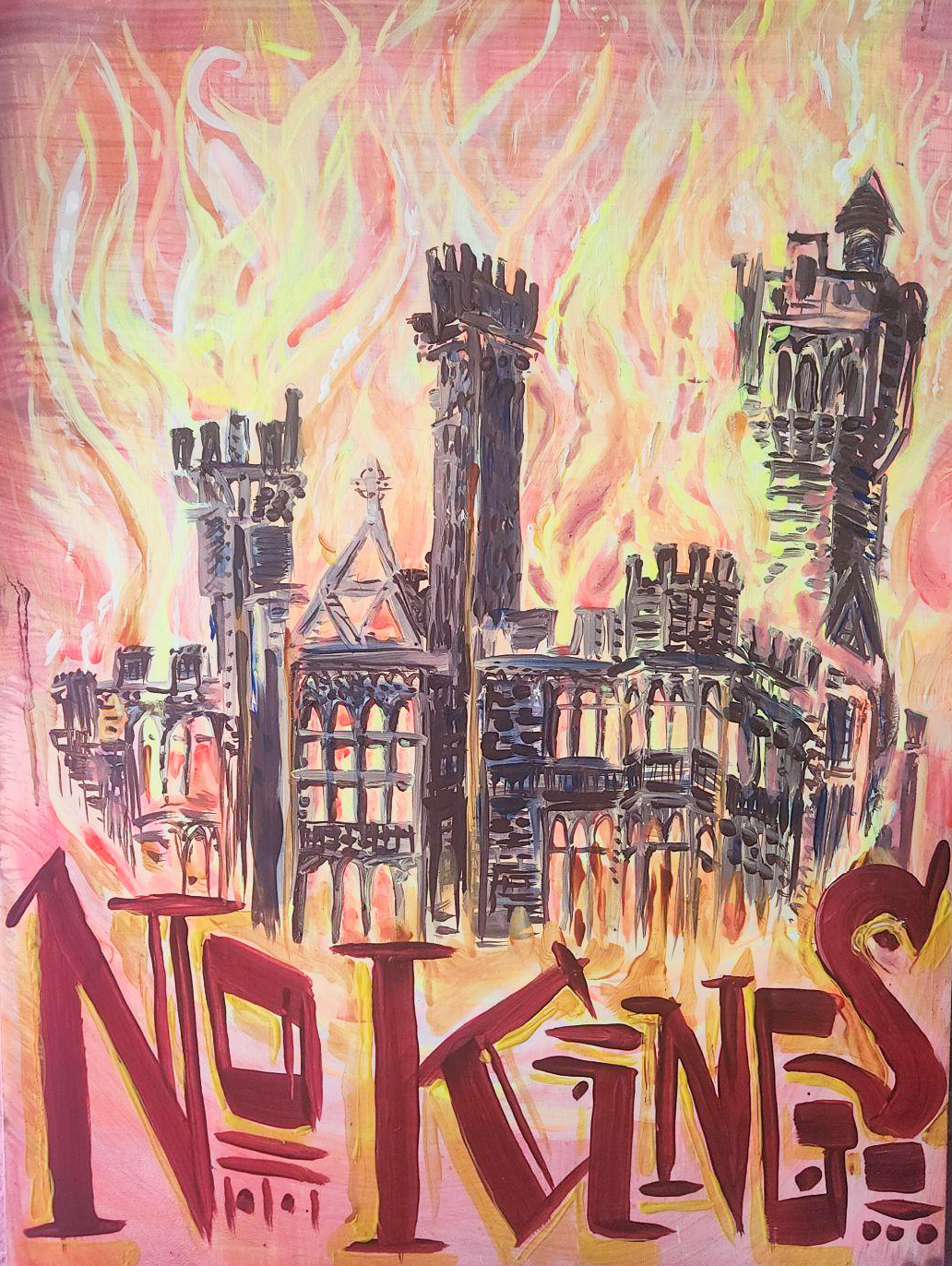On June 14, 2025, millions of people took to the streets in a powerful display of protest against the increasing consolidation of power in the hands of Donald Trump. The “No Kings” protests, held in over 2,100 cities, were a direct response to President Trump’s military parade celebrating the 250th anniversary of the U.S. Army and coinciding with his 79th birthday.
Organized by a coalition of over 200 groups, participants gathered to assert that the United States does not tolerate kings, nor should it accept any leader who seeks to centralize power and undermine democratic institutions. The protests were a call to action, urging citizens to ensure that power remains with the people, not a singular ruler.
But if monarchy is obsolete, why do we still tolerate presidents at all: figureheads of authority cloaked in democracy yet manifesting hierarchy and centralization? The cult of the presidency replicates structures based in obedience to distant power, blind faith in leadership, and the illusion that liberation can be delivered from above.
“No Kings!”? How about “No Presidents!”? Donald Trump is not a king. He is a president, and in many ways, that is the problem.
Plenty of societies still have kings—and ironically, some of those societies offer a standard of living that progressives in the U.S. often tout as a model to aspire to. Countries like Norway, Sweden, the Netherlands, and Denmark maintain constitutional monarchies while simultaneously ranking among the highest in healthcare access, income equality, education, and social mobility.
This seeming contradiction reveals a deeper truth: the presence of a monarch does not automatically equate to tyranny, just as the presence of a president does not guarantee freedom. In fact, it exposes the hollowness of the symbolic distinction between monarchy and democracy when real power is concentrated in elite institutions, regardless of the leader’s title. It’s not the crown or the office that determines justice; it’s whether people have actual control over the systems that govern their lives.
As momentum builds under the banner of “No Kings!” liberals and other activists in the U.S. should consider the real question of how we got here and how we can move forward and away from Trump’s authoritarianism altogether. The question isn’t about monarchy versus presidency, but about the myth of representation itself.
Electoral politics in the U.S. has long promised a voice to the people, yet in practice, it consistently fails to engage the public in the decisions that shape their everyday lives. Voting every few years for candidates pre-approved by party machines and funded by corporate interests offers little more than the illusion of choice. Meanwhile, the economic system that underpins this political structure—one driven by profit, wealth concentration, and the relentless demands of capitalism—renders it nearly impossible for ordinary people to exert meaningful influence.
Most people are too burdened by debt, housing insecurity, precarious employment, and mass media distraction to organize effectively, let alone navigate the labyrinth of bureaucratic systems designed to disempower them. In this landscape, democracy becomes a hollow ritual while real decisions are made in boardrooms, lobbying offices, and closed-door meetings far removed from public accountability.
It may seem overwhelming, even naïve, to imagine a popular movement capable of transcending the established political order, especially when we’ve been taught that change can only happen within the narrow confines of elections and party politics. But history reminds us that there was a time when the idea of a world without absolute monarchy seemed just as impossible.
The end of the era of monarchy as the prevailing order did not come about through polite petitions or voting, but from mass mobilization, collective refusal, and the bold reimagining of power itself. Today, as presidential power grows increasingly unchecked, the threat is not a return to monarchy, but the further entrenchment of the kind of authoritarianism cloaked in democratic legitimacy that our current system of presidents and so-called representative democracy has led us to.
Instead of worrying about going back to the age of kings, we should concern ourselves with forging a future where no single person—whether king or president—can claim the right to rule over millions. This means rejecting the increasingly authoritarian form of government we live under today and building something better—a society rooted in true self-determination, decentralized and non-hierarchical decision-making, and cooperative economics.
Only by dismantling the myths that uphold our political reality—benevolent leadership and freedom through electoral representation—can we begin to imagine something radically different. Like the movements that shut down the WTO in 1999 or occupied Wall Street in 2011, we need mass protest that doesn’t just reject Trump or any one president but confronts the entire system that concentrates power and pacifies the public with pageantry. Real democracy isn’t granted from above; it’s built and lived from below. A different world becomes possible, and inevitable, when people stop waiting for permission to lead themselves.
